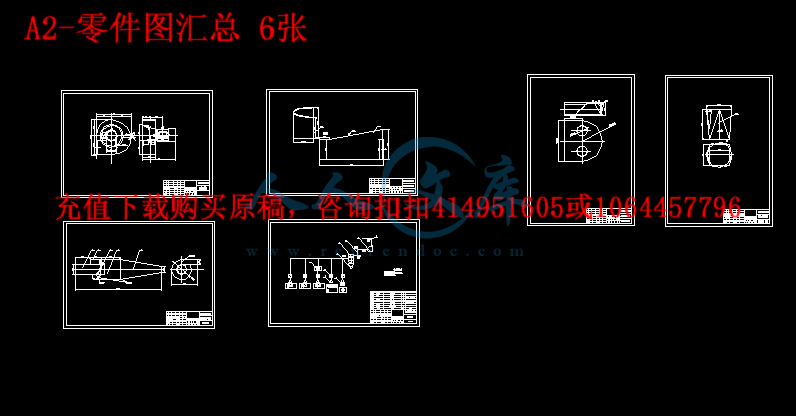目 录
摘要...................................................................1
Abstract...............................................................2
第一章 绪论
1.1工业的污染及其除尘状况的概述...................................3
1.2工业生产中的除尘设备...........................................4
1.3除尘设备的选择.................................................5
1.4旋风除尘器概述.................................................6
第二章 旋风除尘器的设计
2.1旋风除尘器的结构和工作原理.....................................7
2.2旋风除尘器的性能及影响因素.....................................7
第三章 除尘器结构设计计算
3.1选择旋风除尘器的型式..........................................21
3.2选择旋风除尘器的入口风速......................................22
3.3确定旋风除尘器的几何尺寸......................................22
3.4计算进口过渡管、风量汇集箱、出口过渡管的尺寸..................23
3.5计算灰斗的尺寸................................................26
3.6旋风除尘器单体左外筒钢板展开尺寸..............................27
3.7关风器、风机的选择............................................28
第四章 除尘器压力损失ΔP和除尘效率η的计算
4.1压力损失ΔP的计算............................................30
4.2除尘效率η的计算.............................................32
第五章 吸尘罩的设计
5.1吸尘罩的选择..................................................40
5.2吸尘罩的计算..................................................40
第六章 除尘器的安装使用及维护管理
6.1除尘器使用注意事项............................................41
6.2除尘器的运行..................................................41
6.3除尘器的维护..................................................41
总结.................................................................42
致谢.................................................................43
参考文献.............................................................44
外文资料及翻译.......................................................45
工业清灰装置设计
摘要:粉尘是人类健康的大敌,因为它带着许多细菌病毒和虫卵到处飞扬,传播疾病。工业粉尘、纤尘能使工人患上各种难以治愈的职业病,过多的灰尘还会造成环境污染,影响人们的正常生活和工作,诱发人类呼吸道疾病等等。除尘器是在车间必不可少。
利用旋转的含尘气体所产生的离心力,将粉尘从空气中分离出来的一种干式净化设备,成为旋风除尘器。旋风除尘器应用最为广泛,其特点是结构简单,除尘效率较高,操作简单,价格低廉。旋风除尘器对于大于10μm的较粗粉尘,净化效率很高。但对于5~10μm以下的细颗粒粉尘净化效率较低,所以旋风除尘器多用于粗颗粒粉尘的净化,或多用于多级净化的初步处理。适用于铸造车间除尘。
负压除尘系统中,除尘器设置在通风机之前。
其特点: ①由于除尘器设置在通风机之前,流过通风机的气体已经经过除尘,含尘量低。通风机受磨损大大减低,运行寿命长,处理初浓度高的含尘气体时,一般采用负压除尘系统。②除尘器和管道处于通风机的负压阶段,容易吸入空气,产生漏风。负压除尘系统的漏风率为5%~10%,加大了通风机的风量,增加了电耗。③在负压除尘系统设计中应采用措施尽可能的减少除尘器和管道的漏风,以保证除尘器的良好运行。
关键词: 铸造 旋风除尘器 负压除尘
Ash cleaning device design industry
Abstract:Dust ,which carries lots of bacterial virus and ovum flying forwarding in the air ,has become a formidable enemy of human being ,endangering the mankind’s health , Industrial dust and fine dust cause various kinds of incurable occupational disease among workers. Also, excessive dust leads to environmental pollution, having a influence on the people’s daily lives and work, causing respiratory disease,etc. All these make the Dust collector indispensible in the workshop.
By using the cyclone dust rotating centrifugal force generated by gas, the dust is separated from the flow of a dry gas - solid separation device, which forms the Cyclone Dust Collector. The Cyclone Dust Collector is widely used, which featured in it’s simple structure, effectiveness in dust removal, simple operation, and low cost. Cyclone Dust Collector is efficient for the capture, separation of more than 5 ~ 10μm dust. But as to the dust under 5-10μm ,it performs less effectively. Therefore, the Cyclone Dust Collector is mostly used in the casting workshop, purifying the coarse particle dust or becomes the primary treatment of multistage purification.
In the negative pressure dust pelletizing system ,removal equipment was set in front of the ventilator .it’s characteristics are as follows : 1.Because the removal equipment was set in front of the ventilator ,the gas passing through the ventilator has been removed ,therefore, the dustiness index is low 2.The dust collector and the pipeline situated in the negative pressure section ,which is easy to snifting the air ,leads to air leak .the air leak ratio of dust vacuum system is 5% to 10% ,increasing the air quantity of ventilator ,which leads to the electricity cost. 3. should be reduced in the dust collector and pipeline as much as possible In designing the dust vacuum system.
Key words: Casting, Cyclone Dust Collector, vacuum dust removal
第一章 绪论
1.1工业的污染及其除尘状况的概述
1.1.1中国铸造业现状及铸造车间污染情况
近年来.我国铸造业获得了飞跃式的发展,从2000年至2003年.中国铸件产量跃居世界首位。从2003年至今,中国铸件产量依旧保持持续增长。并且。整个世界都在从中国寻求更多的铸件毛坯及含有铸件的终端制品。这种趋势在近期内有可能将继续保持并保证中国铸造业的持续繁荣。但在铸造业繁荣的背后。也存在着形势严峻的一面。有资料表明。我国铸造生产中。材料和能源的投人之比可占到产值的55%到70%。能源环境的制约以及国际铸造科技竞争加剧和知识产权的保护强化.已成为我国铸造业发展的瓶颈.发展节约环保型、科技创新型铸造之路刻不容缓。
我国铸造生产中。材料和能源的投人占产值的55%~70%。我国每产1 t铸件。约散发50 kg粉尘.熔炼和浇注工序排放废渣300 kg、废气1 000 m3造型和清理工序排废砂1.3~1.5 t。每年排污物总量:废渣300万t、废砂近1 650万t、废气110亿m314若从2004年开始按照平均发展速度向前发展,可以预测至2020年各年的铸件产量。根据铸件产量对铸造废砂、铸造废渣及粉尘的数量进行回归预测嘲(如图1),可以看出,中国铸造业如果按照现行的模式生产,到2020年,主要废弃物铸造废砂、废渣及粉尘、CO:、CO的排放量分别为3 235万t、1 122万t、882万t、485万t。如果考虑有色金属铸造产生的污染物以及非铸铁件熔炼中排放的废气,按混合量计.对13亿中国人口来说,单铸造业就给每个人平均带来约50 kg的污染物



 川公网安备: 51019002004831号
川公网安备: 51019002004831号